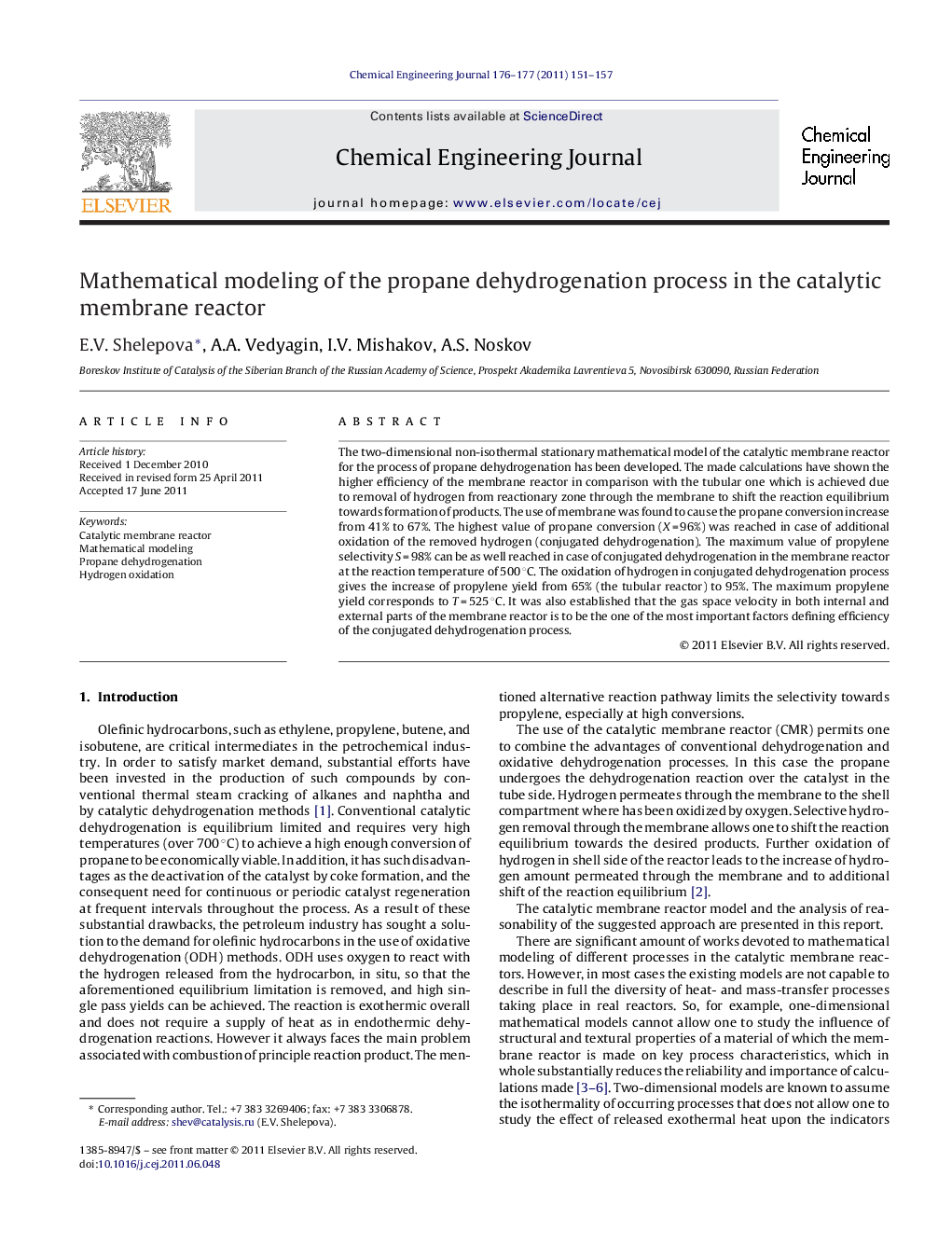| Article ID | Journal | Published Year | Pages | File Type |
|---|---|---|---|---|
| 150682 | Chemical Engineering Journal | 2011 | 7 Pages |
The two-dimensional non-isothermal stationary mathematical model of the catalytic membrane reactor for the process of propane dehydrogenation has been developed. The made calculations have shown the higher efficiency of the membrane reactor in comparison with the tubular one which is achieved due to removal of hydrogen from reactionary zone through the membrane to shift the reaction equilibrium towards formation of products. The use of membrane was found to cause the propane conversion increase from 41% to 67%. The highest value of propane conversion (X = 96%) was reached in case of additional oxidation of the removed hydrogen (conjugated dehydrogenation). The maximum value of propylene selectivity S = 98% can be as well reached in case of conjugated dehydrogenation in the membrane reactor at the reaction temperature of 500 °C. The oxidation of hydrogen in conjugated dehydrogenation process gives the increase of propylene yield from 65% (the tubular reactor) to 95%. The maximum propylene yield corresponds to T = 525 °C. It was also established that the gas space velocity in both internal and external parts of the membrane reactor is to be the one of the most important factors defining efficiency of the conjugated dehydrogenation process.
► The mathematical model of the catalytic membrane reactor has been developed. ► The benefits of “conjugated” dehydrogenation of propane were demonstrated. ► The highest value of propane conversion (X = 96%) was reached in case of additional oxidation of the removed hydrogen. ► The maximum value of propylene selectivity (S = 98%) can be reached in this case.
